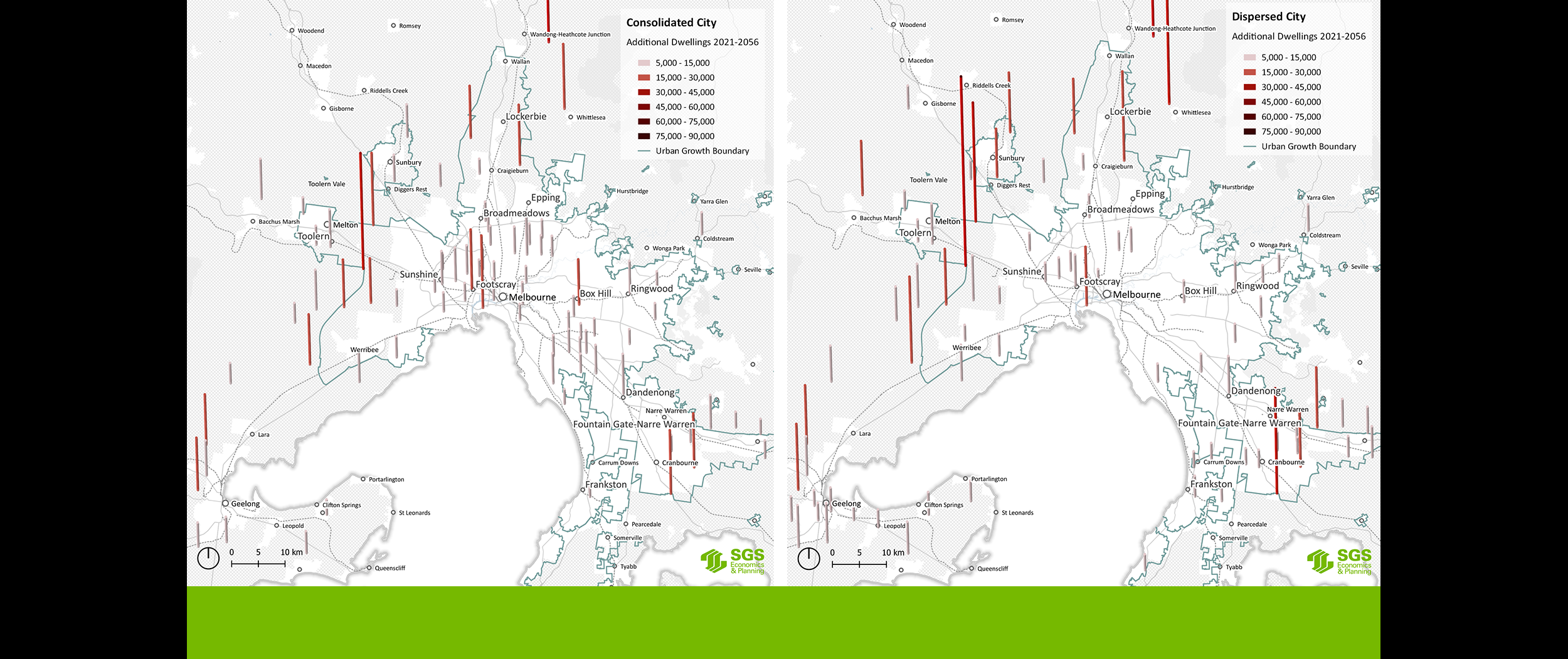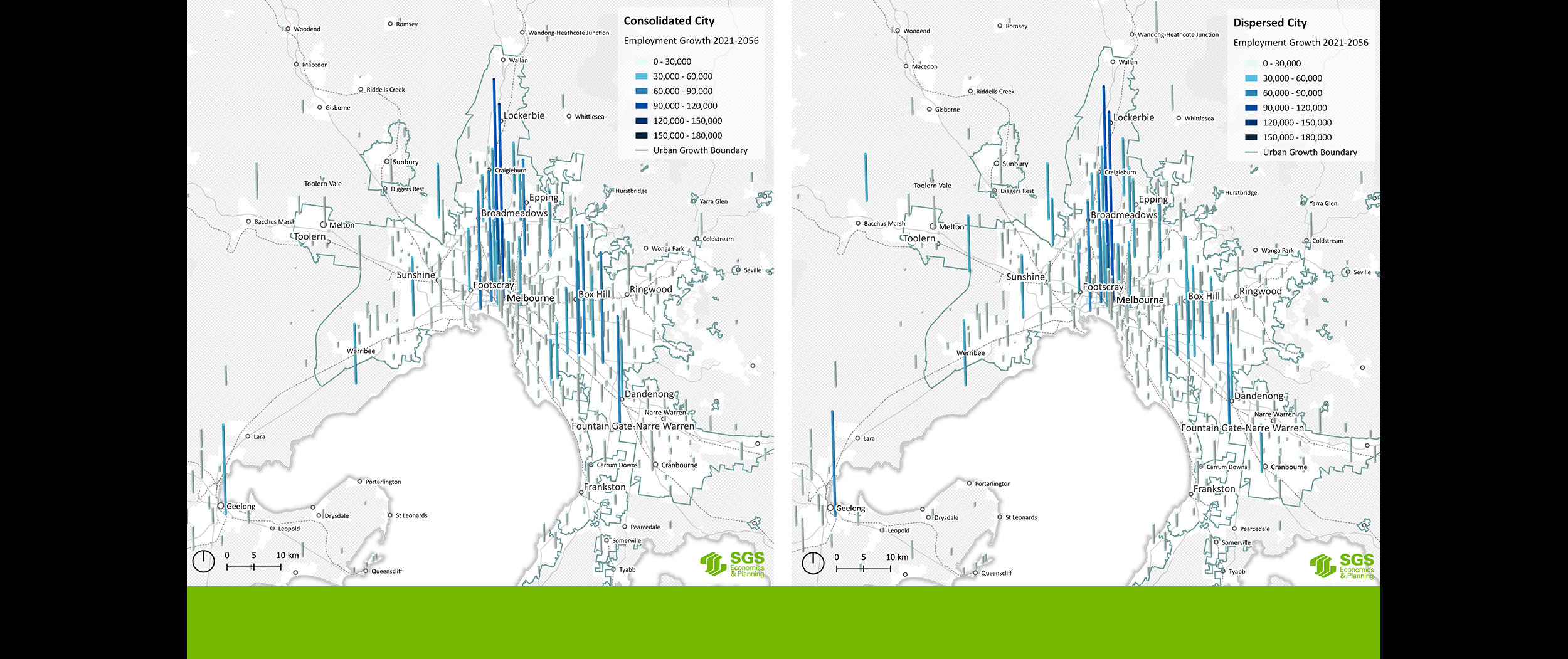Infrastructure Victoria
Over the next 35 years, Victoria is expected to welcome 2.4 million new residents, build 1.1 million homes, and create 1.15 million jobs.
This growth, along with the infrastructure and services needed to support it, will have a significant impact on Victoria's people and its economic future.
The patterns of growth in both population and employment are influenced by many factors. Some of these are under government control, such as policies and investments in infrastructure. Others are driven by external factors, like economic changes, shifts in how people travel, evolving work and lifestyle preferences, and the effects of climate change. In recent decades, these factors have changed significantly. Technological advances and shifts in society have transformed urban areas over time, and the COVID-19 pandemic has further disrupted and intensified these trends.
All these factors are interrelated and dynamic, leading to continuous changes in how people live, work, and play. This has created uncertainty about what Victoria's urban development will look like in the future.
SGS partnered with Infrastructure Victoria to work on the development of five potential urban development scenarios and modelling land use outcomes at a small area level for the state of Victoria. Alongside this, we developed a clear framework and measurement approach to assess the economic, social, and environmental impacts of each scenario.
The five scenarios explored

Compact city
The Compact City scenario reflects more concentrated urban development in the inner city of Melbourne and housing development in places of high transport accessibility.
Consolidated city
The Consolidated City scenario reflects a response to climate change through the development of key centres across Melbourne providing local living and working through changing preferences to create a polycentric city that balances the distribution of people and jobs across a number of high density precincts.
Dispersed city
The Dispersed City forecasts a more dispersed urban structure with increased population in outer Melbourne. Melbourne’s urban footprint expands as population growth spreads across outer Melbourne, peri-urban areas, and the new greenfield development areas at Melbourne’s
fringe.
Network of cities
The Network of Cities scenario projects future where housing affordability in metropolitan Melbourne combined with continuing remote working leads to the development of regional cities as people choose to live regionally.
Distributed state
In the Distributed State scenario population growth decentralises from existing settlements with housing affordability in established areas leading people to settle regionally.
Conceptual framework of impacts
The framework we developed measures the potential environmental, social, and economic impacts of each scenario. It draws on local, national and international frameworks to identify seven key themes that form the basis of the framework that were then categorised according to their environmental, social, economic or cost implications.
The framework considers the key drivers of the urban development scenarios and the potential flow-on effects while also identifying the exact measures to assess the relative benefits of each scenario as well as the methodology required to undertake the analysis.
Our work was used to inform the Choosing Victoria's future: 5 urban development scenarios report that explores how different city shapes and growth patterns impact the state's economy, the environment, and the quality of life of Victorians. The goal is to provide the state with the insights and knowledge needed to make informed decisions about its urban development, taking into account the ever-changing social, economic, and environmental factors.

